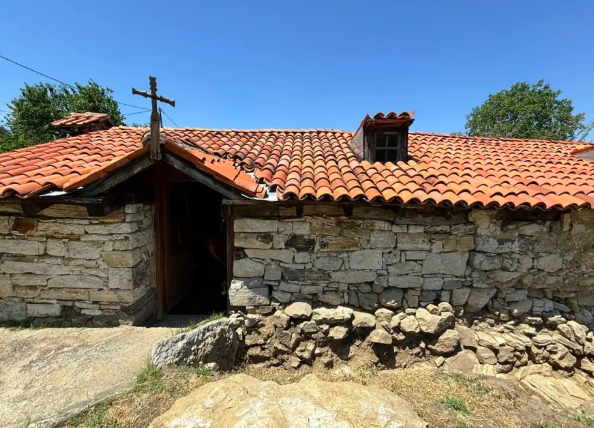The Ministry of Culture is carrying out projects totaling €40 million on significant monuments in the Regional Units of Evros and Drama. Among these is the Bayezid Mosque in Didymoteicho, an iconic monument and one of the most important Ottoman-era landmarks.
Bayezid Mosque
Inaugurated in March 1420, according to its entrance inscription, the mosque covers nearly one acre and consists of a square prayer hall and a minaret at its western corner. A fire on March 22, 2017, destroyed its roof, necessitating a full restoration. The mosque’s previous wooden roof, covered with lead sheets, contributed to its monumental significance. Its complex wooden framework makes it one of Europe’s most important historical wooden monuments. Due to a series of deteriorative phenomena and previous improper interventions, especially in the surrounding area, preliminary restoration works became essential. The mosque will be restored to its early 20th-century state, highlighting elements from previous phases to make its structural history and past interventions clear.

Culture Minister Lina Mendoni
After visiting the monument, a broad meeting was held under the Minister of Culture, with the presence of the Regional Governor of Eastern Macedonia and Thrace, Christodoulos Topsidis, the Secretary General of Culture, Giorgos Didaskalos, the Deputy Regional Governor of Evros, Evangelos Poulilios, the Mayor of Didymoteicho, Romylos Hatzigiannoglou, and relevant ministry officials to review the restoration project timeline.

In her statements following the meeting, Lina Mendoni emphasized the need to adhere to the timeline, with restoration works to be completed by December 31, 2025. She stressed that the Bayezid Mosque’s restoration is a priority for the Ministry of Culture, funded by the Recovery Fund with a budget of approximately €13.5 million. She noted past delays and difficulties since 2017 but highlighted the commitment to complete the work by the set deadline.
Restoration of three post-Byzantine churches in Evros
The Minister then inspected post-Byzantine churches in Metaxades (17th century), Alepochori (18th century), and Paliouri (18th century). These churches, featuring remarkable wall paintings, are being restored with a budget of €1 million from the Recovery Fund.

Little Doxipara-Zone Burial Mound
At the Little Doxipara-Zone Burial Mound, Mendoni reviewed restoration works aiming to return the site to its original state. The mound’s restoration will protect the findings and create a unique museum space reflecting the moment of the excavation’s completion. The excavation revealed four pits with cremation remains, numerous objects, and five burial chariots with their draft animals.
Culture Ministry’s broader initiatives
After visiting the monuments, Mendoni highlighted the ministry’s collaboration with the Region of Eastern Macedonia and Thrace and the independent funding from the Recovery Fund. Nearly €40 million is being invested in Evros alone, marking the first time such extensive and coordinated cultural infrastructure works are being undertaken in the region.

Projects in Drama
In Drama, the Minister of Culture inspected ongoing cultural projects, including the Andrikakis Camp, set to host the Drama International Short Film Festival as part of a broader Audiovisual Arts Center. Mendoni also visited the Arap Mosque and the Holy Church of Hagia Sophia, where significant restoration works are being funded and carried out by the Ministry of Culture.
This comprehensive restoration effort underscores the ministry’s commitment to preserving and promoting cultural heritage, fostering regional development, and enhancing tourism and local economies through significant historical and cultural investments.
Ask me anything
Explore related questions





